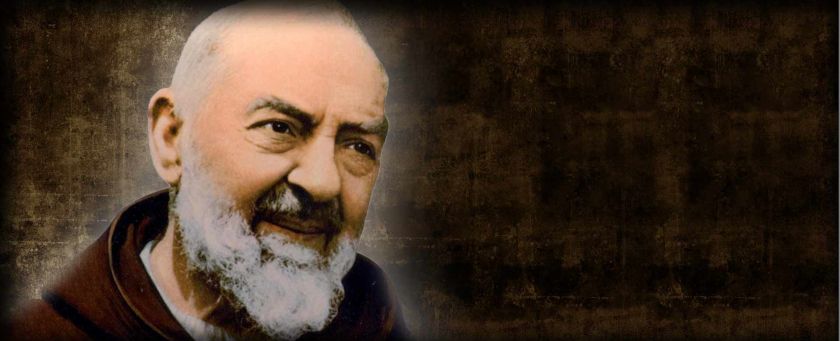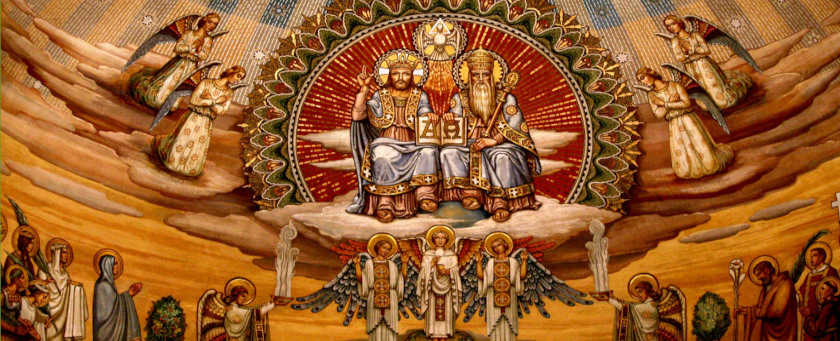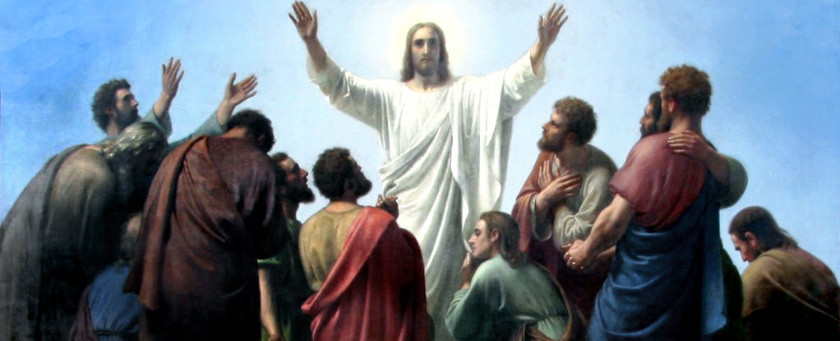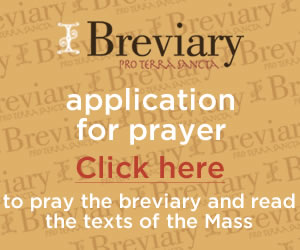Mass in Honor of St. Padre Pio & the Veneration of His Holy Relics
Second Sunday of Advent, Year C

Readings:
Bar. 5:1-9; Ps. 126; Phil. 1:4-6, 8-11; Lk. 3:1-6
Today, we celebrate this Holy Sacrifice of the Mass in honor of Saint Padre Pio. St. Padre Pio was an Italian priest who had a deep love for Jesus, our Lady, and the people around him. He is one of only a handful of mystics who bore the wounds of Christ, the Stigmata—something that still cannot be explained. One might say that he so conformed his will to Christ’s that the Lord gave him a share in his own passion. We know that our Blessed Lord’s passion was the act of redemption for all mankind, therefore, to have a share in our Lord’s suffering as St. Pio did was to, in his own way, participate in this great act of self-sacrifice.
St. Pio was born Francesco Forgione, the son of peasant farmers in Pietrelcina, Italy. He was baptized in the church of St. Ann, who was the mother of our Lady. He was an altar server in his home church and knew he wanted to become a priest at the age of five. To prove his dedication and love for God, he began taking on penances. By the age of fifteen, Francesco entered the novitiate of the Capuchin Franciscan Friars in Morcone. This is where he took the name Friar Pio. Capuchin priests seek extreme poverty, strictness, and simpleness. They try to live as closely to St. Francis’ ideals as possible.
Once he joined the Friary of St. Francis, he had several bouts of serious illness and religious ecstasy. Friars would report that strange noises would come from his cell. Padre Pio had frequently spoken about attacks from the devil, and it was there where these battles had taken place. Although he was very ill, he was still ordained a priest in 1910.
In November 1914, World War I began and Padre Pio was drafted into the army. He struggled with stomach illness and was diagnosed with bronchitus. He took a leave of absence for medical reasons and returned home. In 1916, Padre Pio moved to our Lady of Grace Capuchin Friary located in San Giovanni Rotondo. Although he was called back into active duty again, he once more took a medical leave of absence and was given a permanent discharge. He remained in San Giovanni Rotondo for the rest of his life.
In August of 1918, Padre Pio began experiencing a painful stigmata. These wounds would come and go over a period of weeks. They soon became permanent and remained on his body for 50 years, only disappearing miraculously a few days before his death on September 23, 1968. Countless experts and doctors looked at his wounds with no clear explanation. Some questioned the authenticity of the wounds, and others could not find a sure diagnosis. Padre Pio never had a fever or drops in blood pressure, but the wounds bled day after day for 50 years. The proof of this is present here today.
In the beginning, Padre Pio felt great humiliation for his wounds, which brought him great pain, but he welcomed it. He welcomed this pain for all mankind. He was visited by many pilgrims wishing to see some of the miraculous manifestations that his presence attracted. Padre Pio was made a Saint on May 2, 1999 by Pope John Paul II, who said to those present, “The altar and the confessional were the two focal points of his life…” As we see here, the relics placed next to the altar, and several priests were hearing confessions throughout the day. As Pope John Paul II said, “What a consolation to feel we have Padre Pio close to us, one who only wanted to be ‘a poor friar who prays’: a brother of Christ, a brother of Francis, a brother of the suffering, a brother of each one of us. May his help guide us on the way of the Gospel and make us ever more generous in following Christ! May the Blessed Virgin Mary, whom he loved and helped others to love with profound devotion, obtain this for us. May his intercession, which we confidently invoke, obtain this for us.”
Today’s letter from St. Paul to the Philippians encourages them to be steadfast in faith. Having written this letter while in prison, he longs to be with them. But, since he can’t, he offers this prayer for them, saying, “And this is my prayer: that your love may increase ever more and more in knowledge and every kind of perception, to discern what is of value, so that you may be pure and blameless for the day of Christ, filled with the fruit of righteousness that comes through Jesus Christ for the glory and praise of God.” What a beautiful prayer; what beautiful encouragement from a man imprisoned for his faith. Given this context, we can see how deeply St. Paul loved the people of the communities he helped to build. His prayer was for their love to grow in knowledge, perception, and discernment, so they can be pure and blameless for the day of Christ.
The ‘day of Christ’ is indeed a reference to the second coming. During Advent, as we prepare to celebrate the Nativity of Jesus, his first coming, we are also mindful of his promise to return and take us to himself. This is one of the great hopes of our faith, and it is most certainly a guarantee, but are we prepared for his return?
When we assess our lives, all that is going on in the world around us, can we say we are ready for Jesus’ return? Can we say our love has increased in every kind of knowledge and perception? Are we truly able to discern what is of value? Are we filled with the fruit of righteousness Jesus speaks of false prophets, who come in sheep’s clothing. “By their fruits you will know them” (Matt. 7:16). In other words, there are many liars in the world, children of the enemy. Their fruits are lies, trickery, and deceit. These they do under the cover of night. But, it shall not be so for us. We rejoice in the truth, and to rejoice in the truth is to walk confidently, as during the day: The day of Christ.
In our Gospel, St. Luke describes the way in which John the Baptist fulfills the passage from the prophet Isaiah: “Prepare the way of the Lord, make straight his paths…” The day of Christ is soon upon us, so let us prepare to escape the darkness of night by entering the truth of day. Let our good deeds go before us, and may our intentions remain pure. Then, we will know the love of Christ first hand.





Twitter
Facebook
Pinterest
Email